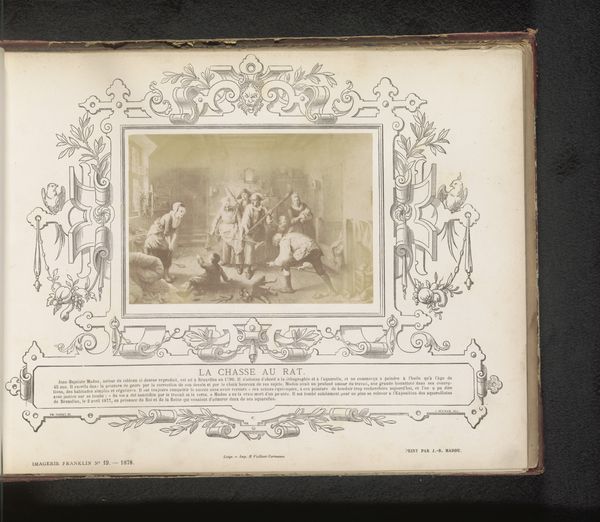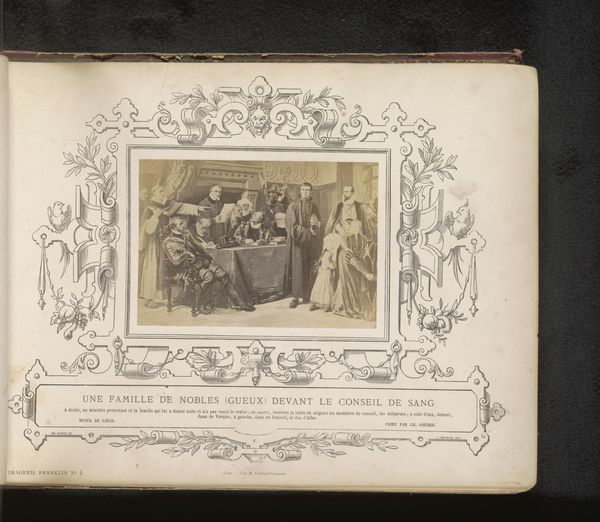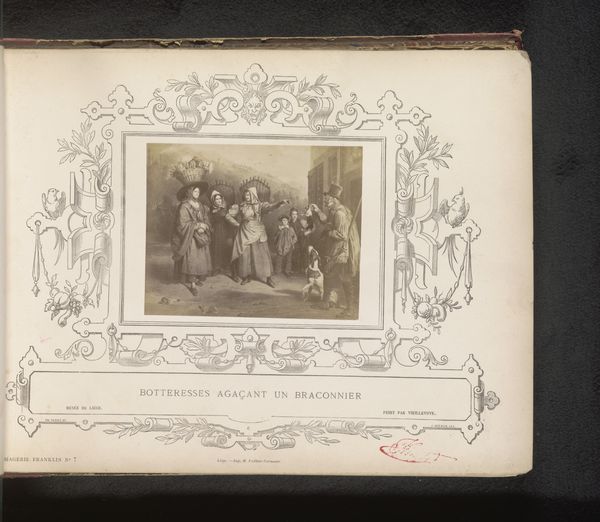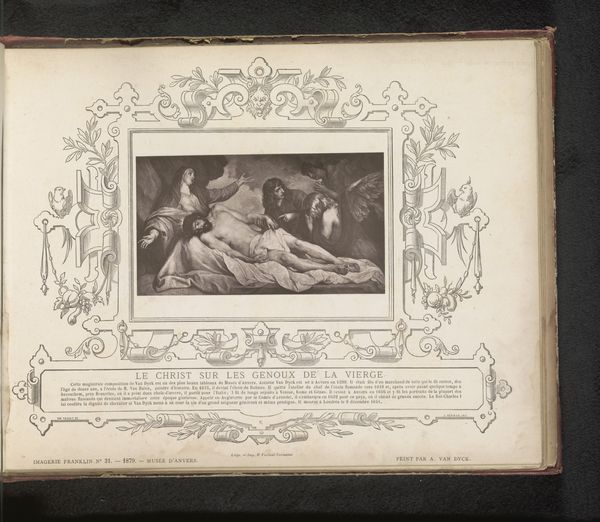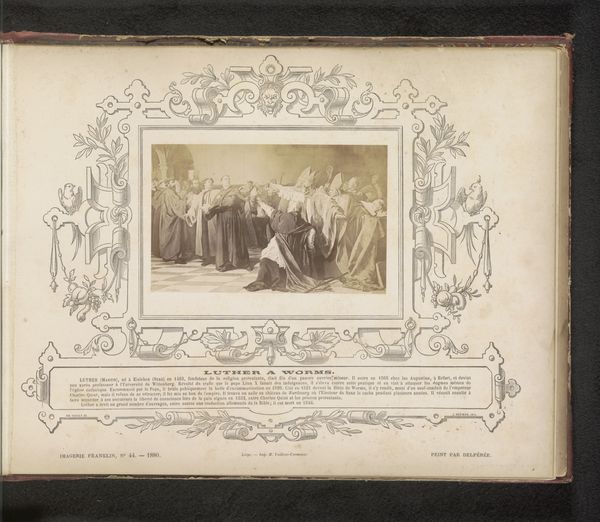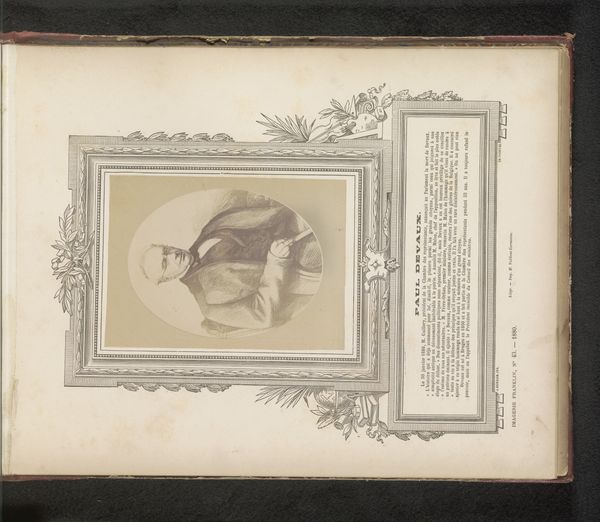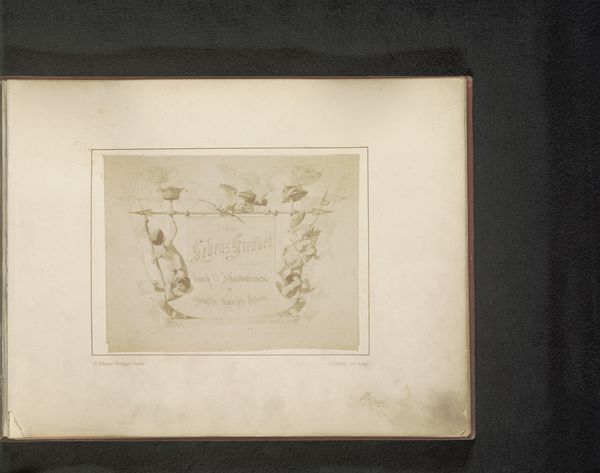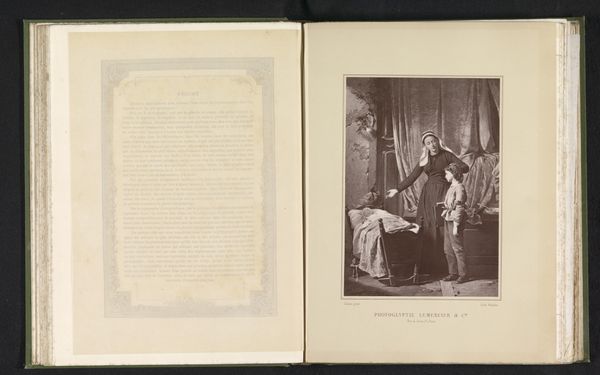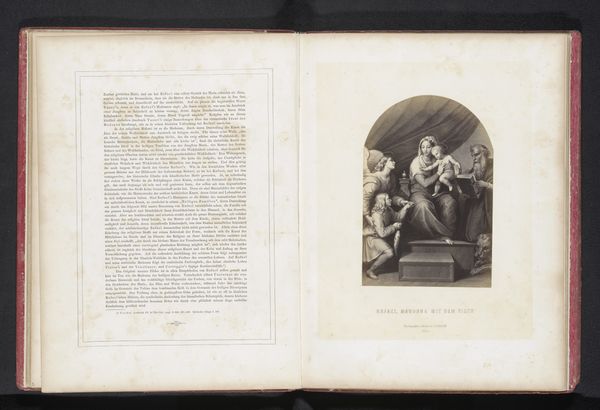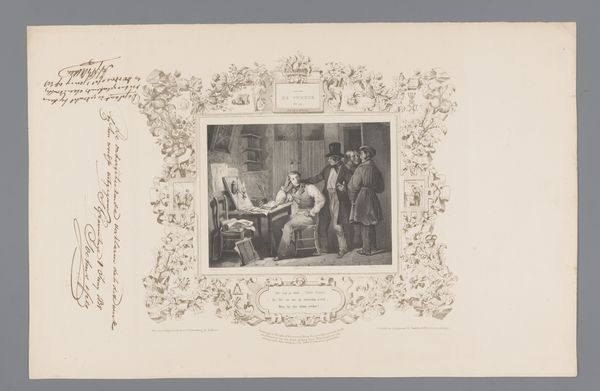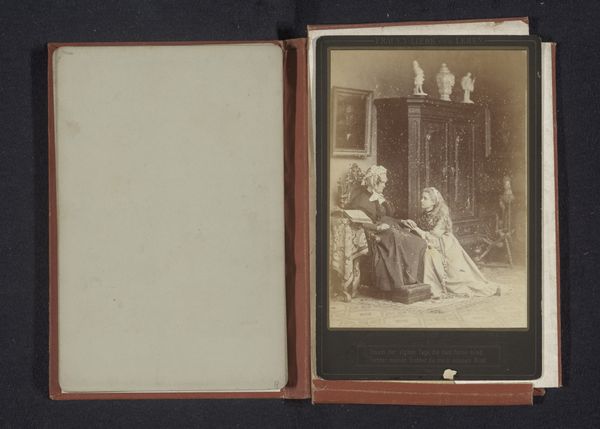
Fotoreproductie van een gravure van Hubert Goffin en zijn zoon in de mijn van Beaujonc door Léonard Jéhotte before 1880
0:00
0:00
print, engraving
#
portrait
#
aged paper
#
toned paper
# print
#
sketch book
#
personal sketchbook
#
pen-ink sketch
#
pen and pencil
#
pen work
#
sketchbook drawing
#
history-painting
#
storyboard and sketchbook work
#
sketchbook art
#
engraving
Dimensions: height 98 mm, width 126 mm
Copyright: Rijks Museum: Open Domain
Curator: This artwork is titled "Fotoreproductie van een gravure van Hubert Goffin en zijn zoon in de mijn van Beaujonc door L\u00e9onard J\u00e9hotte," created before 1880. It's a print, an engraving, portraying a historical moment. Editor: It has this faded, sepia tone, doesn't it? A somber mood immediately strikes me. The light, though dim, directs your gaze directly at the two figures, the older man having such a weighted expression. Curator: The image depicts Hubert Goffin, a mine chief, with his son, inside the Beaujonc coal mine. It reflects the dangers and the close-knit familial structures within the mining community. Engravings like this one played a vital role in visualizing industrial labor, especially in an era lacking widespread photography. Editor: Notice the texture! Look closely, and you see how J\u00e9hotte varies the depth of the lines to produce highlights and shadows that lend volume to Goffin's robes and make the boy's gaze so intense. Curator: Exactly. And that use of light-- it doesn't merely illuminate but seems to emphasize the father’s protective arm around his son. It reinforces the precariousness of their existence within the mine. Prints like these were frequently commissioned to represent working-class lives. Editor: It's almost theatrical in the composition: these figures positioned so carefully around that single candle, hinting perhaps at ideas around vulnerability and faith within these hazardous conditions. The way the artist employs dark and light speaks to this dangerous and volatile industry. Curator: Indeed. Mass production allowed these images to be distributed widely and create awareness of these occupational realities in the 19th century. These images were about recording labor, disseminating visual culture and shaping political discourse around industrialization. Editor: Reflecting on the engraving, what stands out for me is the stark contrast between the dark, undefined background and the figures’ luminous presence – highlighting how such stark tonal differentiation generates strong emotional impact. Curator: I think examining pieces like these, in the broader visual landscape, reminds us about how history, even the obscured stories within a coal mine, can be rendered visible through art, prompting us to reassess past realities and reflect on labor's human cost.
Comments
No comments
Be the first to comment and join the conversation on the ultimate creative platform.
